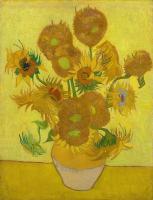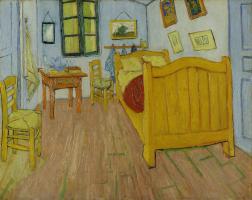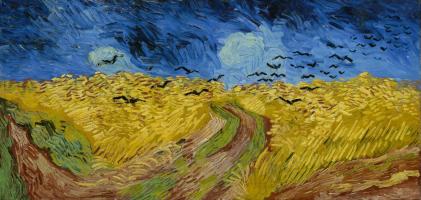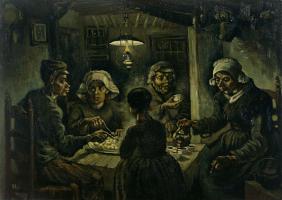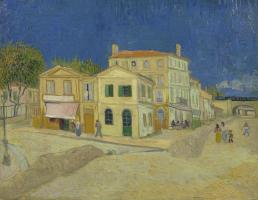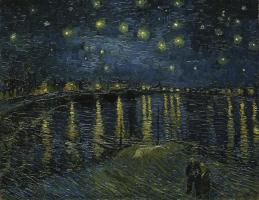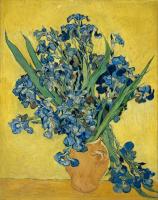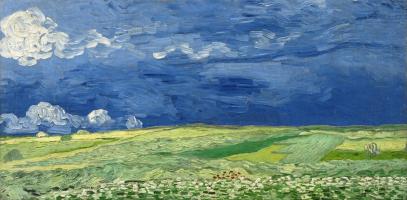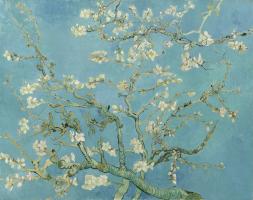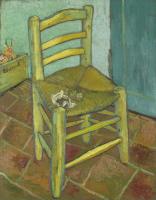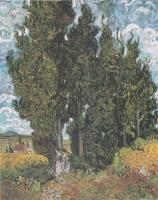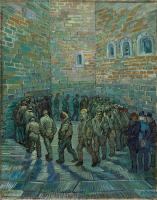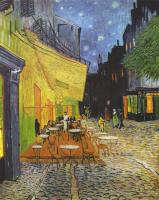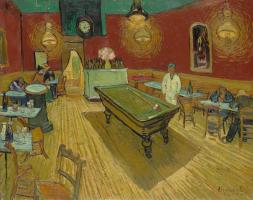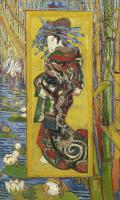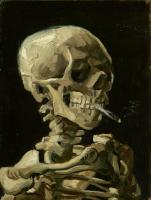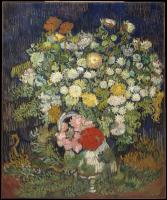Vincent van Gogh
Van Gogh was probably the greatest Dutch artist after Rembrandt. He was a bitterly unhappy and lonely man, and we know a good deal about his inner life as a result of a massive, stirring and deeply moving autobiography in the form of hundreds of letters written to his brother Theo. These described how his paintings and drawings attempted to give shape to his feelings; they were cries of anguish in his passionate and ultimately destructive search for self-knowledge.
He was a man of deep religious belief, the son of a minister, and he was both lay preacher and missionary in a coal-mining district of Belgium before he took up painting. His character is full of contradictions: his dedication has resulted in a large number of magnificent and important paintings and drawings; yet he also abandoned himself to drink, despair, and the violent expression of his personal feelings. He mutilated himself by cutting off his ear, and finally committed suicide.
Most of his short life was spent in Holland, and his paintings of Dutch peasants are characterized by heavy dark colour; but in 1886 he joined his brother Theo in Paris, where he was influenced by the Impressionists and his entire colour range broadened and lightened. In 1888 he moved to Arles in the South of France, and his work became increasingly vivid and passionate as his mental state deteriorated. He suffered from fits, and was eventually admitted to an asylum at Saint-Remy. He was allowed freedom to paint, however, and in his clear periods was still productive, but it was there in 1890 that he eventually shot himself.
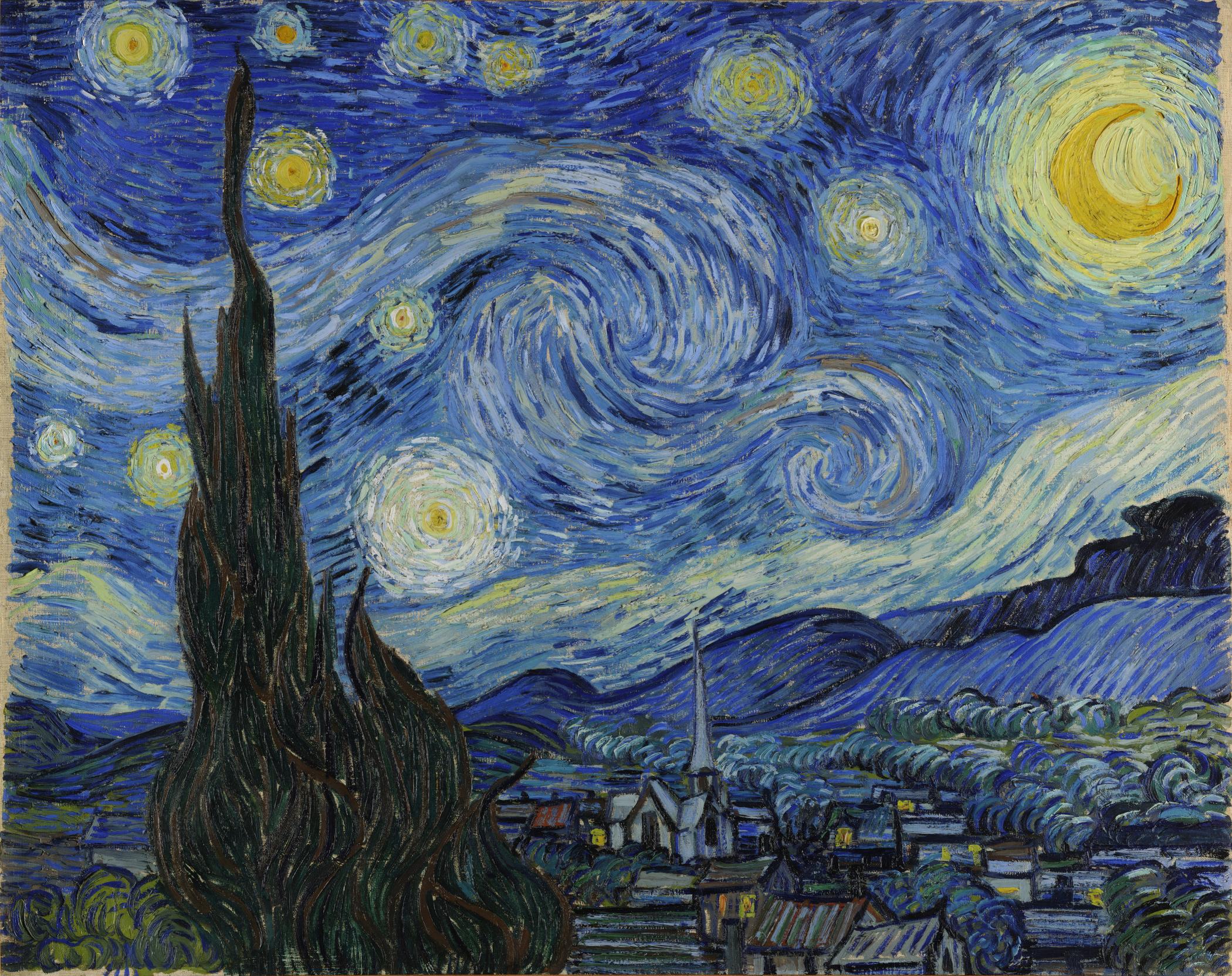 In Starry Night it is easy to see the turbulence of his unbalanced and
tormented personality behind the vibrant colour and fast and furious brushwork,
with its characteristic short strokes and swirls of paint. But the painting has
too the energy and vigour which were an essential part of van Gogh’s
temperament and art.
In Starry Night it is easy to see the turbulence of his unbalanced and
tormented personality behind the vibrant colour and fast and furious brushwork,
with its characteristic short strokes and swirls of paint. But the painting has
too the energy and vigour which were an essential part of van Gogh’s
temperament and art.
It is full of a sense of joy and understanding of the relationship between the world we know on earth and the vast expanses of the universe. The cypresses, familiar features in his landscapes, tower against the deep blue of the night sky, with its sun and crescent moon and eleven stars whirling in space. There are lights in all the village houses, and a church at the centre whose central spire reaches up to the sky above the distant hills. The eleven stars are other worlds continuing into infinity and dwarfing our own planet, yet the village lights and the church link the earth with them, emphasizing that it is part of the same immense creation. It is an intensely religious picture, painted with an almost fanatical fervour, and its strength and energy are electrifying.
 Van Gogh’s desire to paint a starry night sky was something he mentioned
repeatedly in his letters throughout 1888. The result was this study of Arles,
as he described it to Eugene Boch: “The town lighted with gas reflected in a
blue river. Over it the starry sky with the Great Bear — a sparkling of
pink and green on the cobalt blue field of the night sky, whereas the lights of
the town and its ruthless reflections are in red gold and bronzed green’.
Van Gogh’s desire to paint a starry night sky was something he mentioned
repeatedly in his letters throughout 1888. The result was this study of Arles,
as he described it to Eugene Boch: “The town lighted with gas reflected in a
blue river. Over it the starry sky with the Great Bear — a sparkling of
pink and green on the cobalt blue field of the night sky, whereas the lights of
the town and its ruthless reflections are in red gold and bronzed green’.
 Van Gogh’s own “white deal chair”, painted as a pendant (companion piece) to
Gauguin’s armchair. Both chairs were symbolic portraits of the two young men,
painted in a rare period of calm, shortly after Gauguin’s
arrival at the Yellow House in Arles.
Van Gogh’s own “white deal chair”, painted as a pendant (companion piece) to
Gauguin’s armchair. Both chairs were symbolic portraits of the two young men,
painted in a rare period of calm, shortly after Gauguin’s
arrival at the Yellow House in Arles.

